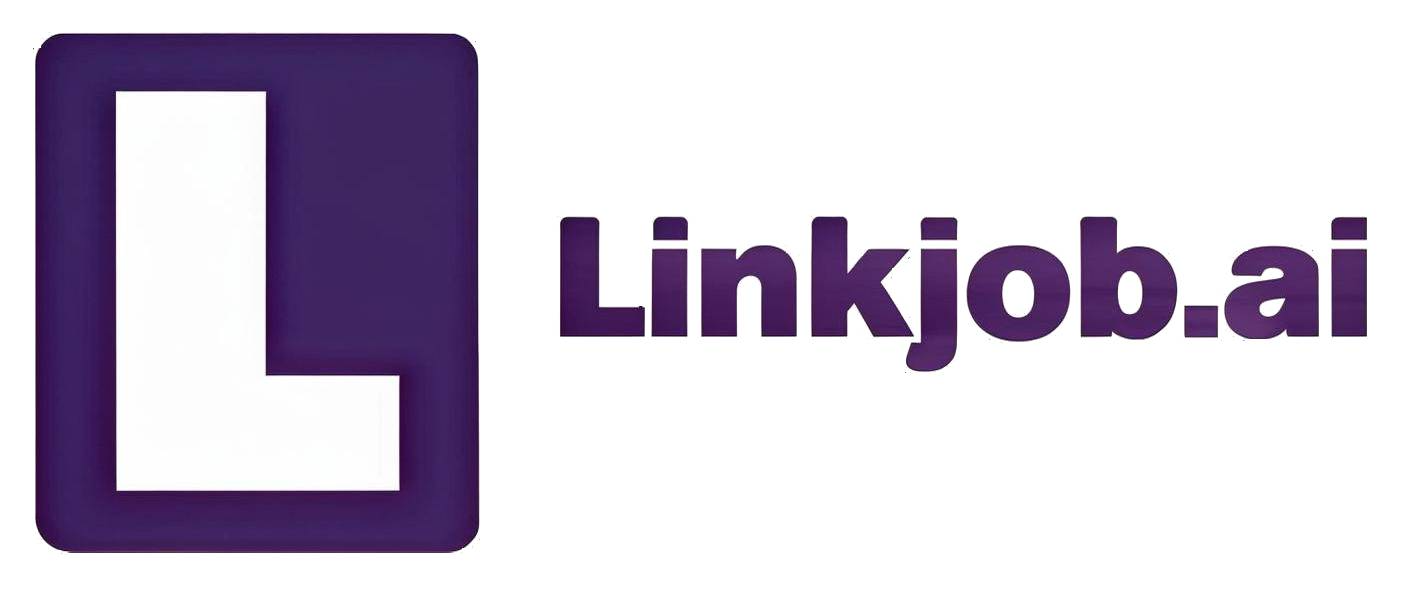How I Passed the Maven Securities HackerRank Test 2025

I interviewed for the Quant position at Maven Securities. The online assessment had two rounds, both requiring the camera to be on, and the use of a calculator or scratch paper was not allowed.
The first round consisted entirely of math, probability, and logic multiple-choice questions. The second round included three LeetCode-style coding problems. Overall, the first round felt quite time-pressured, and the second round was moderately challenging.
I am really grateful for the tool Linkjob.ai, and that's also why I'm sharing my entire OA interview experience here. If it weren’t for Linkjob.ai’s powerful stealth mode AI coding copilot, I probably wouldn’t have finished the interview on time. Having an undetectable AI assistant during the interview is indeed very convenient.
Maven Securities HackerRank First Round Questions
There were quite a lot of questions in the first round. Below are the recalled interview questions I wrote down right after completing the test.
1. There are 100 teams playing in a knock-out competition. What is the least number of games to be played to decide the winner assuming no games are drawn?
A) 50, B) 98, C) 99, D) 100, E) 101
2. Suppose we have a circular table, on which 3 legs are placed uniformly at random around the circumference of the tabletop. What is the probability the table can stand?
A) 0, B) 1/4, C) 1/3, D) 1/2, E) 1
3. A 6-sided die is rolled and summed repeatedly until the sum is 100 or more. What is the most likely last roll?
A) 1, B) 3, C) 4, D) 5, E) 6
4. There are three cookie boxes: the first contains 20 chocolate cookies, the second one contains 10 oat cookies, and the third box contains a mix of chocolate, oat, and raspberry cookies, 5 of each. Given we take two cookies from a box at random and both of them are chocolate, what is the probability we took them out of the first box?
A) 1/2, B) 2/3, C) 41/46, D) 21/23, E) 10/11
5. You shuffle a pack of 54 regulation playing cards, including jokers. Turn over the cards one by one, discarding each one as you turn it over. What is the average number of cards required to be turned over to produce the first ace?
A) 10, B) 10.5, C) 11, D) 13.5, E) 16
6. There is a knockout squash tournament in which 8 players enter. The first round matchups are drawn at random. Assuming the best player always beats the next best and so on, what is the probability the second best player makes the final?
A) 3/8, B) 1/2, C) 4/7, D) 7/8, E) 1
7. There are 10 6-sided dices labelled from 1-10, how many different combinations can we get to have their face values sum to 16?
A) 3003, B) 5005, C) 8008, D) 8010, E) 11440
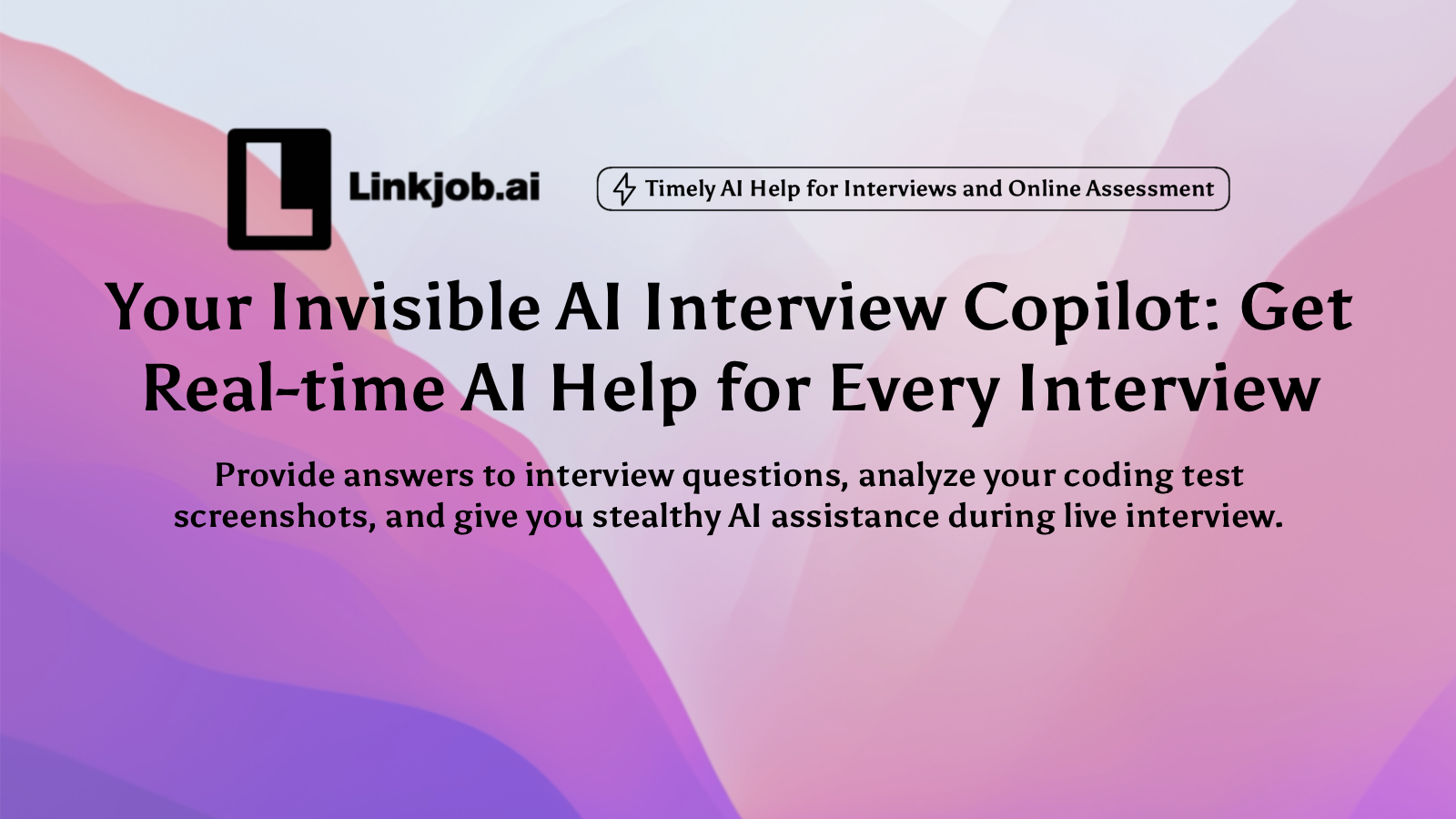
8. A certain disease affects 1% of the population. A medical test is developed to test for the disease, but is imperfect. If a person has the disease, they will test positive 99% of the time. If a person does not have the disease, they will test positive 5% of the time. Given someone tests positive for the disease, what is the approximate probability they actually have the disease?
A) 17%, B) 20%, C) 84%, D) 98%, E) 99%
9. How many unique arrangements are there of the letters in the word STATISTICS?
A) 50400, B) 201600, C) 604800, D) 1814400, E) 3628800
10. What is the probability of choosing an arrangement where all the S's appear consecutively? (referring to the word STATISTICS)
A) 1/40, B) 1/15, C) 2/15, D) 1/10, E) 1/5
11. Once upon a time, a knight, a liar, a jester and a child meet. The knight always tells the truth, and the liar always lies. The jester only tells the truth if the person before is lying, and vice versa, and finally the child tells the truth after a truth, and a lie after a lie. The first person says "I am a jester". The second responds: "And I am not a knight". The third states: "Because I am the knight", and the fourth mutters "All I know is I'm no liar". Determine how many of the four were telling the truth.
A) 0, B) 1, C) 2, D) 3, E) 4
12. Jim flips a fair coin until he obtains two consecutive heads or tails for the first time. What is the probability he flips the coin an even number of times?
A) 1/3, B) 1/2, C) 2/3, D) 4/7, E) 3/4
13. Antony collects toys in cereal boxes. There are 5 toys and each box has an independently random toy inside. If each cereal box costs £4, what is the expected cost to collect all the toys?
A) £20, B) £45.68, C) £53.44, D) 58, E) £80
14. What is the smallest k such that any set of k distinct integers from {1, 2, ..., 100} must contain two numbers where one divides the other?
A) 49, B) 50, C) 51, D) 89, E) 100
15. Suyash rolls three dices. What is the probability he rolled them in a strictly increasing order?
A) 9%, B) 56%, C) 33.3%, D) 25%, E) 17%
16. In a tribe language "OMOLON" there are only three syllables O, MO and LON. A word is considered to be any sequence of these syllables (syllables can be repeated, and it is not necessary to use all syllables). How many different words of length 5 are there in the language of this tribe?
A) 7, B) 11, C) 12, D) 13, E) 16
17. We have a bag containing a large number of balls. 1/2 are white, 1/3 are red, and 1/6 are blue. Given the first ball you take out from the box is white, what is the approximate probability the next one will be white too?
A) 1/12, B) 1/6, C) 1/3, D) 1/2, E) 2/3
18. Randomly select 3 different integers from 1-30, probability that one number is the average of the other two.
A) 1/30, B) 3/58, C) 13/290, D) 12/203, E) 3/116
Maven Securities HackerRank Second Round
Problem 1: Maximum Occurring Character
Key points tested: It mainly examines the ability to traverse strings and count characters. It is necessary to efficiently count the occurrences of each character and handle the logic of "if the number of occurrences is the same, take the one that appears first".
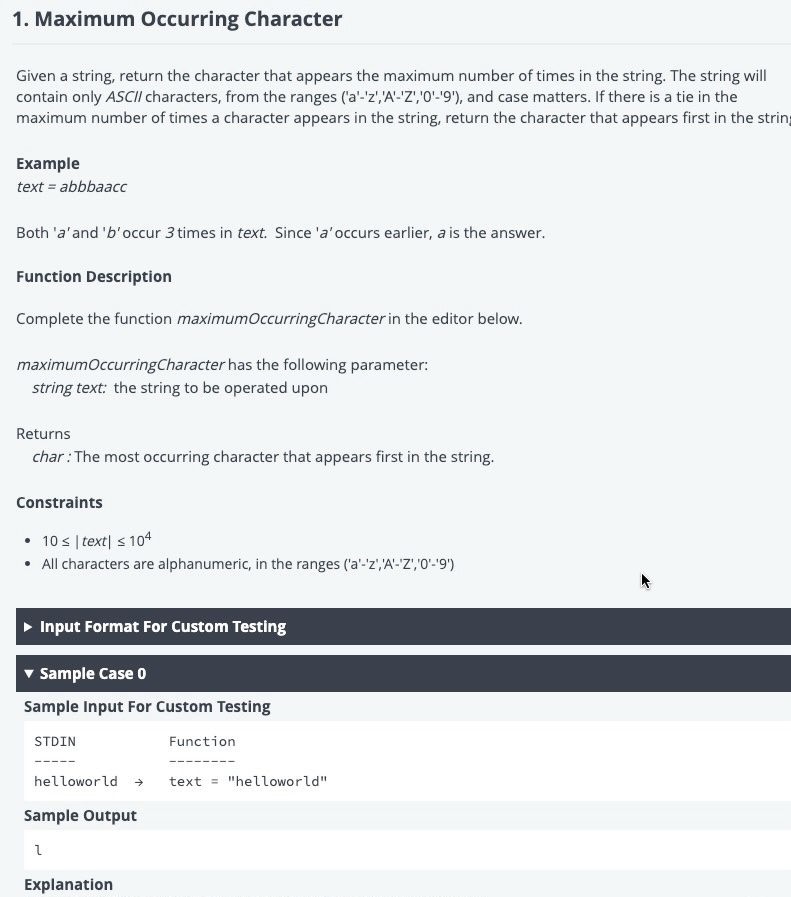
I used Linkjob AI to generate the answers for all these coding problems. I just clicked the screenshot button and let the AI handle the rest, super easy. It provided me with the solution approach and the complete code, which I simply copied over. And it was completely undetectable, even while I was sharing my screen.
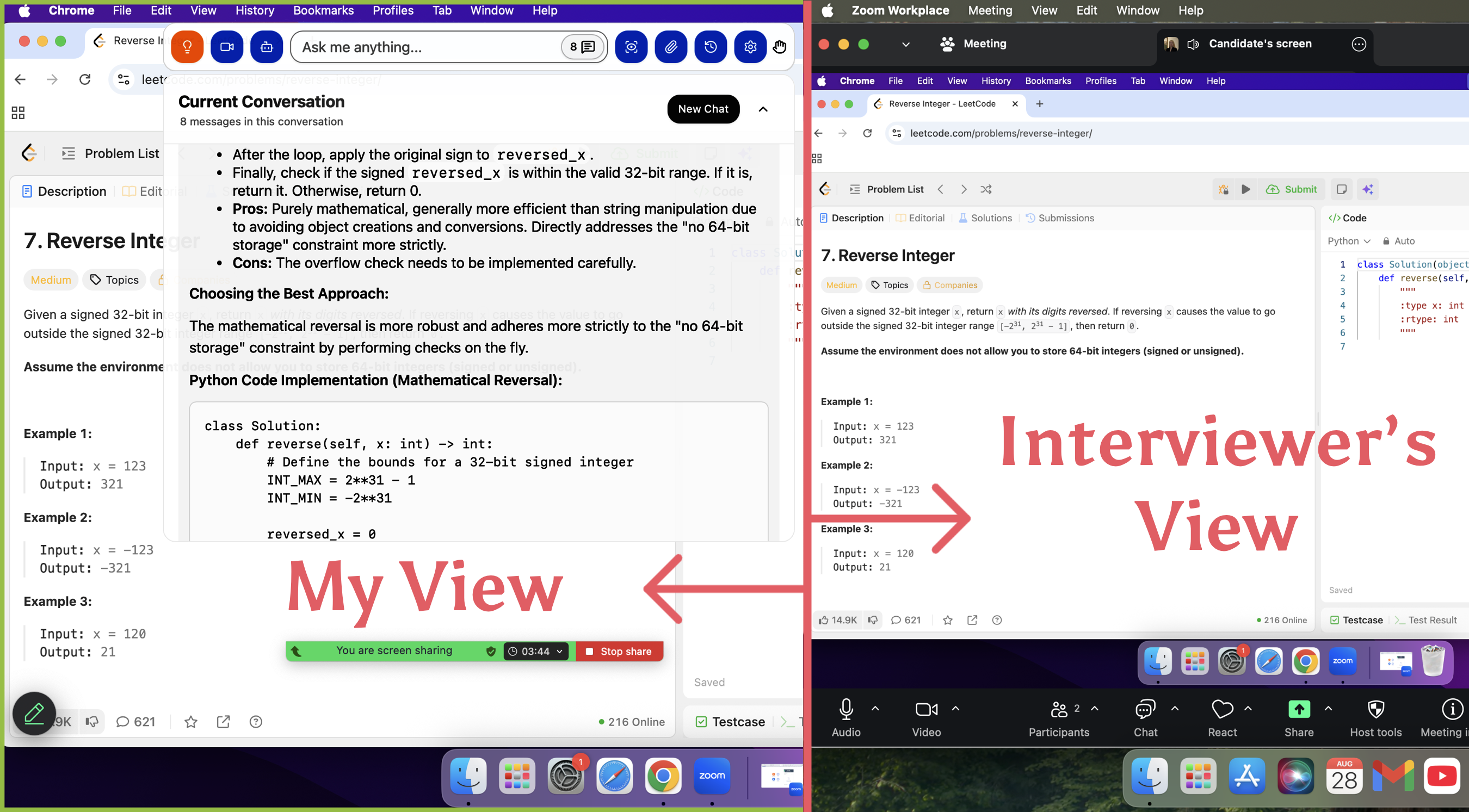
Problem 2: Maximum Array Correlation
Key points tested: It focuses on the application of the greedy algorithm. It is required to find the optimal element matching strategy to maximize the sum of elements satisfying b[j]>a[j] by properly rearranging the elements of array b.
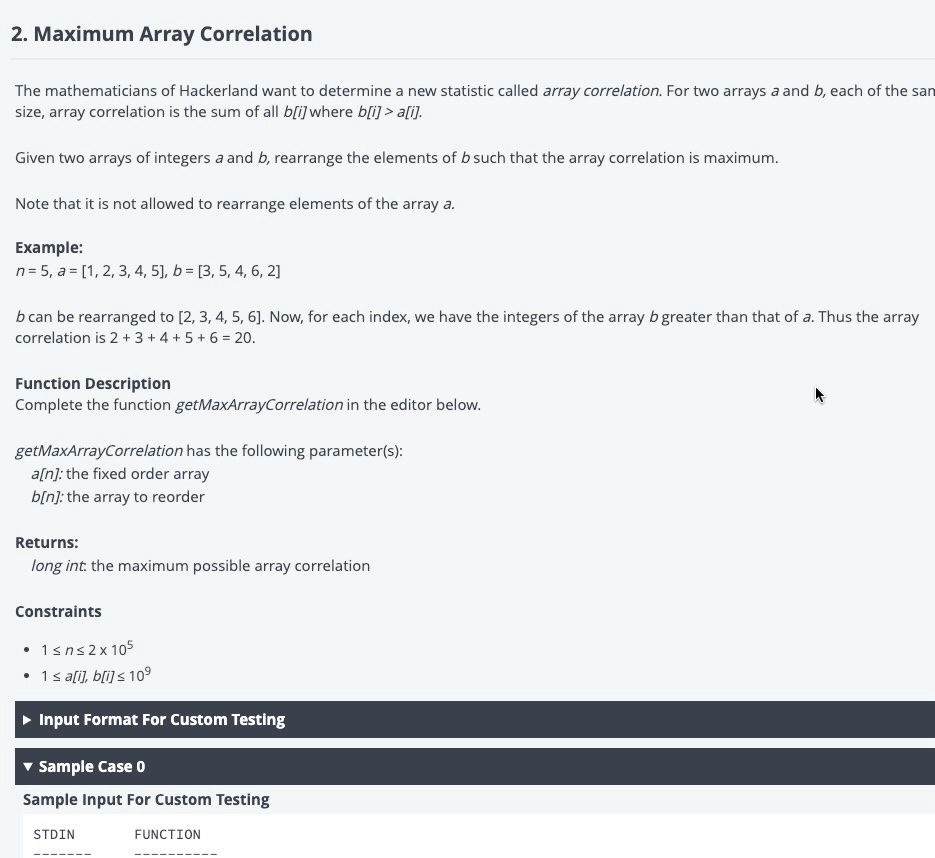
Problem 3: Maximum Distance
Key points tested: It comprehensively examines the application of multi-source Breadth-First Search (BFS) and binary search. It is necessary to first determine the distance from each position to the nearest obstacle, then find a path that meets the conditions, and at the same time handle the problem of minimizing and maximizing the distance from obstacles in the path.
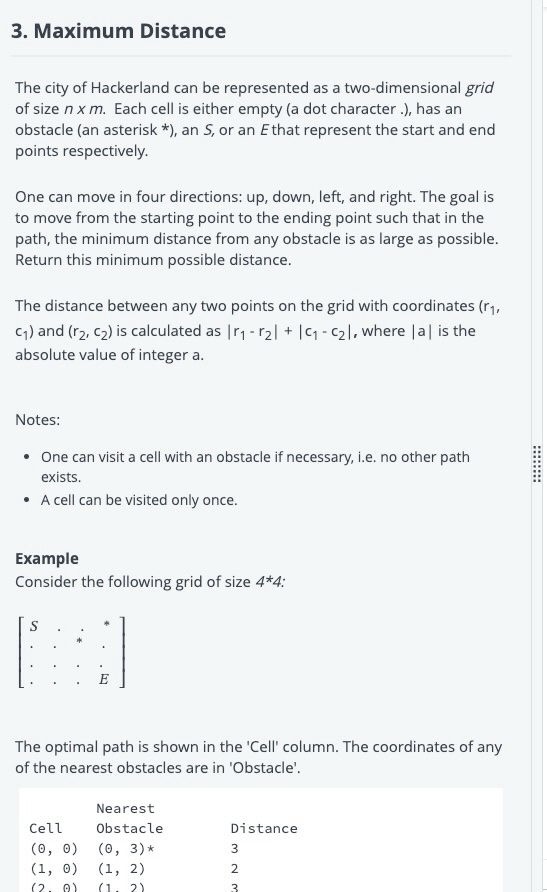
Maven Securities HackerRank Test Format
Honestly, I didn’t take this HackerRank test lightly while preparing for it. After all, it was for a Quant role, and the requirements for algorithms and logic focused more on practicality than for regular developer positions. The number of questions was tight, so I had to keep an eye on time management while solving them.
Unlike some companies that only test hard problems, Maven mixed basic and medium-difficulty questions. The key was whether I could solve problems steadily, accurately, and quickly. After all, Quants deal with massive amounts of data and strategy logic daily, and this was clearly reflected in the test.
Question Types
There were mainly three types of questions I encountered, let me break them down for you:
The first type is Coding Problems, which have the highest weight. They aren’t obscure algorithm problems; instead, they’re all scenarios I might encounter in a Quant job. For example, given a set of transaction data, I need to calculate the maximum profit range, or process financial codes in string format. When writing code, it’s not just about getting the right answer, I also need to consider efficiency. For instance, hash tables are better than brute-force traversal for large datasets.
The second type is Multiple-Choice Questions (MCQs), all covering basic but critical knowledge points. They aren’t hard, but I need to memorize the basics. I almost mixed up the hash table resizing mechanism for one question, but luckily, I reviewed high-frequency test points before the exam.
The third type is Data Processing Tasks, which test attention to detail and resemble the kind of data cleaning Quants do daily.
Key Topics
First, Data Structures, especially arrays, hash tables, and heaps. For example, hash tables are used to count high-frequency transaction data, and heaps to find the "top K values."
Second, Algorithms: greedy algorithms, dynamic programming, and BFS/DFS are core.
Then there’s Financial Data Handling, a Maven specialty. This includes processing time-series data, calculating moving averages, and even simple statistical formulas.
Finally, Python Optimization. Quants use Python a lot, and the test implicitly checks code efficiency. For example, list comprehensions are faster than for-loops for traversal, and numpy is more memory-efficient than native lists for large datasets.
Maven Securities HackerRank Test Preparation Strategies
I only had 10 days from receiving the test notification to taking the exam, so my plan was super tight, focusing on short-term score improvement.
Timeline
Let me share my 10-day timeline:
Days 1–2: Assessment + Focus on Key Areas
Days 3–7: Intensive Practice + Summary
Days 8–9: Mock Exams + Gap-Filling
Day 10: Light Review + Mental Preparation
Daily Goals
My daily goals needed to be specific; I couldn’t just say “practice questions,” or I would easily slack off. Here’s what my daily goals looked like:
9–10 AM: Watched a video on one knowledge point, took notes while watching, and focused on problem-solving templates.
10 AM–12 PM: Solved 5 questions on the corresponding knowledge point, starting from easy to medium difficulty.
2–4 PM: Solved 3–5 financial data processing questions.
4–5 PM: Summarized the day’s wrong answers, clearly wrote down the reason for each mistake, then copied the optimal solution and marked key steps.
7–8 PM: Skimmed one hard question (no need to solve it), focusing on the problem-solving approach to broaden my perspective. I didn’t worry about whether I could solve it; the goal was to build intuition.
FAQ
Will the test include financial professional formulas?
Not really complex ones. I only encountered basic stats like variance or covariance. The test cares more about how you calculate these with code than memorizing formulas. Just review simple financial stats basics, no need to cram hard-core finance theory.
What to focus on if I can’t finish all questions?
Prioritize 2-3 fully correct answers over 4-5 partial ones. Maven grades on full test case passes.
How long do Maven’s test results take to come?
Results take 3-4 business days (faster than I thought). Also, if you fail, there’s no detailed feedback.
See Also
How I Passed the Microsoft HackerRank Test in 2025 on My First Try
My Secret Hacks For Beating HackerRank Proctoring Tools
Stripe HackerRank Online Assessment Questions I Got in 2025
My Experience of the Databricks New Grad Interview Process in 2025
My Secret Checklist to Pass the OpenAI Coding Interview in 2025

